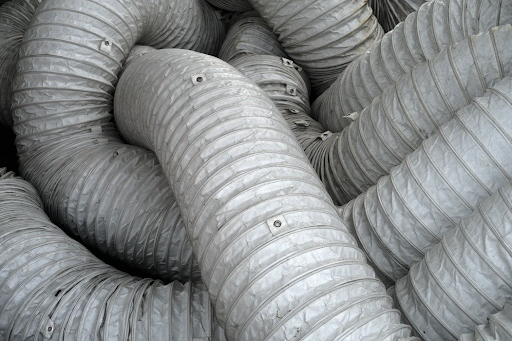How to Improve Your Home’s Air Quality
Poor indoor air quality can be a more serious concern than many people might expect – allowing dust, pollen, animal dander and other airborne particulates to circulate freely throughout the home can affect comfort levels, interfere with the basic operation of HVAC equipment, and may even pose a health hazard for those who suffer from asthma, allergies, or other respiratory conditions. From sophisticated air filtration and purification systems to good old-fashioned housekeeping, there are plenty of ways to improve your home’s air quality.

Importance of Ensuring Good Air Quality
While air quality is an essential concern in terms of ensuring that homeowners are able to maintain a comfortable interior environment, it is also a concern that often goes overlooked. Even something as mundane as having too much dust can create problems that might include clogged air filters, foul air, and unpleasant odors. There are many benefits to keeping fresh air circulating throughout your home.
Relief From Allergies
Allowing common allergens like plant pollen or animal dander to circulate freely throughout the home without taking steps to address the problem may increase both the frequency and severity of allergy attacks. Proper ventilation, professional cleaning services, and sophisticated filtration systems can help to improve air quality in order to provide relief from allergy symptoms like sneezing, watery or itchy eyes as well as coughing and sore throat.
Asthma and Respiratory Ailments
Allergies are not the only medical condition that may be negatively impacted by poor air quality. Many potentially-serious respiratory conditions like asthma, bronchitis, or emphysema may be exacerbated by high levels of airborne particulate. Caring for an elderly loved one or a family member who suffers from a medical condition that could be made worse by poor air quality is an essential responsibility. The presence of one or more family members within the home who suffer from a respiratory condition means that every effort should be made in order to ensure poor air quality does not become a problem.
Mold and Mildew Infestations
The presence of mold or mildew within the home is another common problem that can significantly reduce air quality. Mold and mildew both thrive in dark environments where humidity levels are high and are often found in basements, crawlspaces or even within ducts and vents. While even a small mildew infestation is often enough to create a strong, unpleasant musty-smelling odor, mold can be a far more serious problem. Some molds are toxic and their presence within the home can pose a significant risk, even for occupants who are in relatively good health.
Increased Comfort
While maintaining a more comfortable home may seem like a less pressing concern, especially when compared to health issues like allergies or mold infestations, improving air quality can make quite a difference. High levels of allergens, airborne particulate and other pollutants that may be found within ducts, HVAC equipment or in free circulation throughout the home can lead to issues like unpleasant odors, coughing and dry throat, red or watery eyes or even poor quality sleep, but even trace amounts of these pollutants may be enough to cause problems. Ensuring fresh, clean air in every room of the home can go a long way towards improving household comfort.
Causes of Poor Air Quality
There are several situations and underlying issues which may be contributing to poor interior air quality. While an infestation within the home or ducts that have gone too long without a professional cleaning are both examples of problems that may originate indoors, many problems stem from poor outdoor air quality. Determining the root cause of the problem is often essential for ensuring that efforts to address poor air quality will be met with greater success.
Seasonal Allergens
Allergen is a term used to describe substances which may produce an immune system response once they have come into physical contact with the body. Examples of airborne allergens include pollen from flowers, trees and other plants. Pollen levels can be expected to fluctuate throughout the year and are far more likely to become a problem during the spring and summer months. While most allergens originate outside the home, there are still substances like animal dander which may be spread whenever house pets shed their fur. Both air filtration and cleaning are effective ways to reduce allergens to a more manageable level where they are less likely to impact air quality or provoke an allergy attack.

Dirt, Dust and Debris
Airborne dust as well as dirt and other debris small enough to remain suspended in the air can be found within even the cleanest homes. While harmless in small enough quantities, high levels of dirt and dust can irritate the eyes, nose and throat in ways that can often be confused with allergies. Too much dirt, dust or debris within the air can quickly impact household comfort or even interfere with HVAC and climate-control system operation. Excessive dust or dirt can often clog air filters or impede airflow within ducts and vents.
Air Pollution
Air pollution is a common problem in areas that are close to highways, factories, and other industrial operations, and high levels can become a serious health issue. Homes that lack adequate ventilation and filtration equipment may be at higher risk to the problems caused by poor outdoor air quality or pollution. High levels of air pollution are linked to many health issues and homeowners who live in areas where air pollution is a known problem would do well to protect themselves and their household by upgrading their filtration system and ensuring adequate air circulation within the home.
Ways to Improve Air Quality
There are several steps that can be taken in order to address the root cause of poor interior air quality. Simply replacing the air filter and attending to housekeeping chores like dusting and vacuuming may be enough to have a perceptible difference. In situations where basic efforts may not be enough to produce results, arranging for a professional duct cleaning or the purchase and installation of a filtration system or air purification equipment may prove worthwhile.
Air Filter Replacement
While air filters are an essential part of any HVAC system, they are often ignored and may even be forgotten about completely. Depending on the system, most filters are designed to be replaced every two to three months in order to ensure optimum performance. Failure to do so regularly could lead to a buildup of dust and debris on the filter which might obstruct air flow, impede system operation or decrease air quality throughout the home.
Dusting and Vacuuming
Simple housekeeping can also be an effective way to improve the quality of the air. While even a basic air filter can be very effective at trapping dust, filters are unable to remove dust, allergens and other particulates that have begun to accumulate on floors, furnishings and other surfaces. Frequent dusting and regular vacuuming ensure that dirt, dust and other debris that has settled and begun to accumulate is less likely to become an issue.

Professional Duct Cleaning
Some problems may require more than a common household vacuum cleaner to address. Arranging for a professional duct inspection and cleaning is always a smart move, especially in older homes, households where air quality remains a persistent issue or in situations where routine duct cleaning and maintenance may have been neglected. A professional cleaning can ensure superior results and is often the best solution, as there are few homeowners who possess the specialized tools, equipment and know-how needed to tackle the job on their own.
Infestations and Pests
An infestation within the ducts, vents and other HVAC components can quickly become a major issue. It is not uncommon for molds and mildew to take root inside of air ducts and other hard-to-reach locations within the system. Even pests and vermin like mice have been known to nest within the ducts. Arranging to have a professional inspect the system and clean out the ducts is often the best way to get rid of a mold, mildew or pest infestation and can make a significant difference in ensuring optimal air quality throughout the home.
Air Filtration and Purification
While both housekeeping chores and professional cleaning services can help to eliminate many of the pollutants that may be causing poor interior air quality, cleaning alone may not be enough to prevent any future problems or issues which may develop. Standard air filters are effective at removing some dust and larger airborne debris, but they are often unable to provide the superior level of performance that may be needed in order to ensure that air quality improves. In situations where a standard air filter is not enough, high-efficiency filtration systems and purification equipment may be necessary.
HEPA Filtration
High efficiency particulate air (HEPA) filters function in the same manner as a conventional air filter, only these filters are far more effective at removing pollutants. Ideal for homes located next to an industrial center, a highway or other high-traffic road or for households where allergies and respiratory issues continue to be a problem, HEPA filtration can provide a level of results that far exceeds conventional air filters. HEPA filters are typically available as either an add-on for a central climate-control system or as a smaller, free-standing appliance able to provide room and area-specific air purification. HEPA filters are able to trap particulates and pollutants that are orders of magnitude smaller than anything a conventional air filter may be able to handle and are known to remove up to 99.97 percent of dust, dander and pollen from the air.
UV Filtration
Ultra Violet (UV) filtration is another equipment option to consider. While HEPA filters function by trapping pollutants with a physical barrier, a UV filtration system uses a special frequency of light in order to kill any bacteria, fungus and other microorganisms that may be circulating in the air. UV filtration can be especially effective at combating bad smells and strong odors but may prove to be less than effective when it comes to dealing with high levels of dirt and dust. UV filtration is ideal for removing airborne mold or mildew from within the home and these filters often play an important role during cleanup and mold remediation efforts. These systems can also be operated in concert with HEPA filtration in order to provide a level of results and effectiveness that neither filtration system may be able to achieve alone.
Improving and Maintaining Good Indoor Air Quality
While indoor air quality may seem like a minor concern, failing to address the situation can often have significant consequences. For homes where duct cleaning and HVAC maintenance may have been neglected or form properties may be located in an area where outdoor air quality is known to be an issue, investing in cleaning services or filtration equipment can be well worth it. Improving air quality can ensure optimal performance of HVAC equipment and climate-control systems and help to ensure that home and property owners maintain a more comfortable household. Air quality can be an even more important issue for family members who suffer from allergies, asthma or other respiratory ailments.
